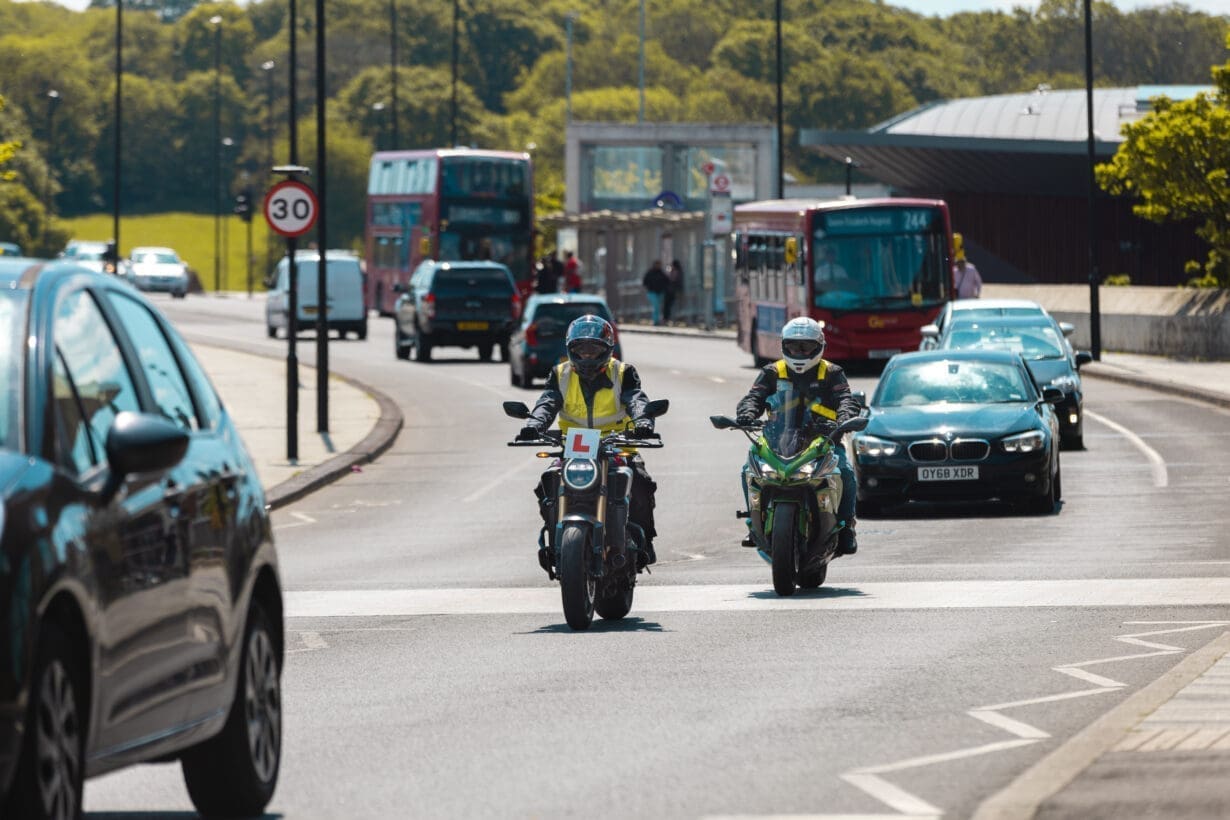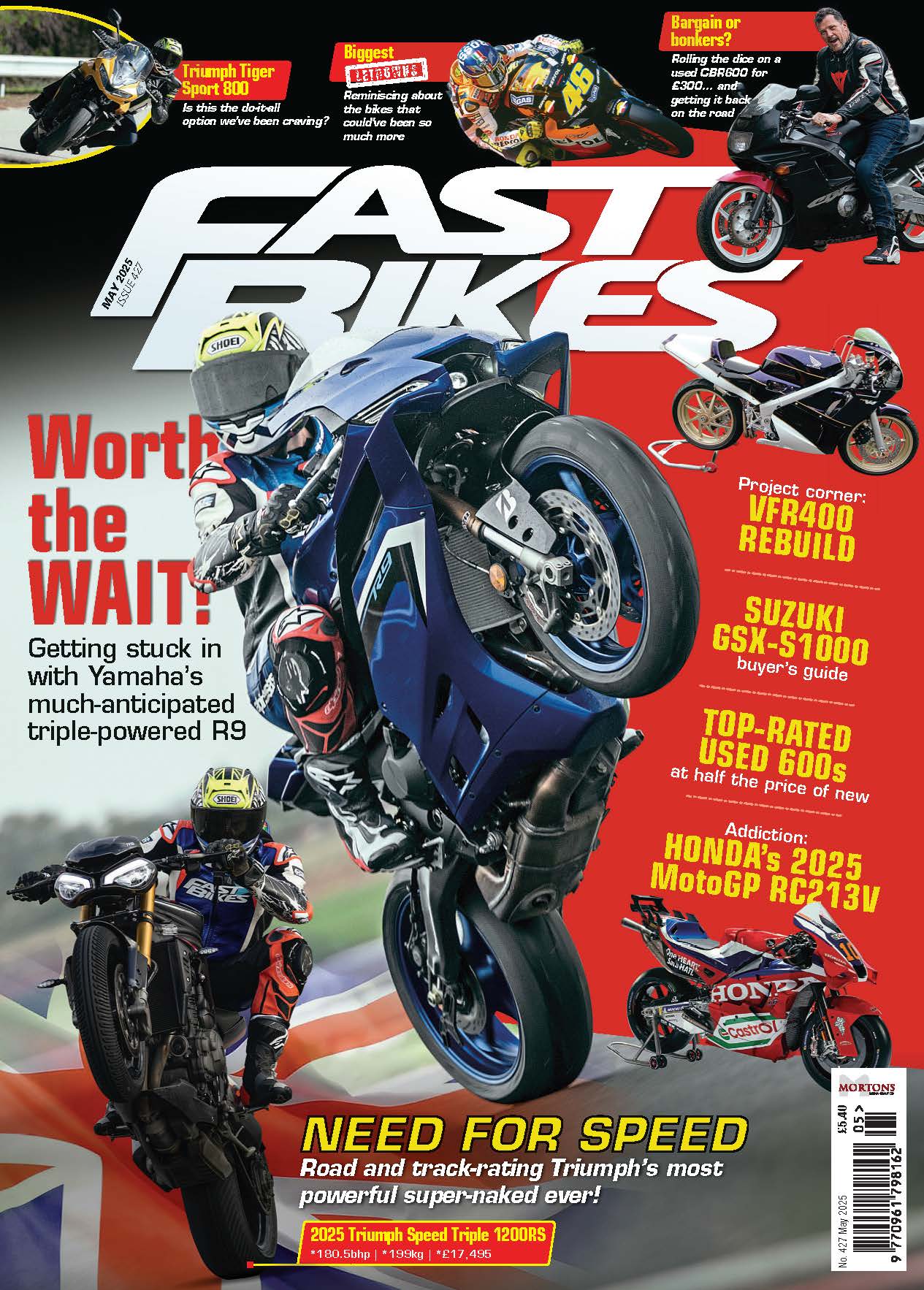Slow riding is a skill all its own. It’s one of those things that looks really easy but catches many riders out as it’s not something people often practice. We spoke to Enhanced Rider Scheme (ERS) trainer Ian Burchell from Phoenix Motorcycle Training to find out how to hone our slow-speed riding technique, and what to watch out for in the process
It might not be the sexiest thing you can do on a motorcycle, but being able to ride confidently at slow speeds comes in very handy when riding in slow-moving traffic, filtering, or negotiating junctions.

Being good at slow riding is not something most people are naturally good at. Even advanced riders often struggle with slow-speed riding. Not many want to admit it, but it’s a skill that many lack. And that’s why it’s so important to practice slow riding.
One thing to remember when you practice slow riding: Don’t be a hero. You don’t need to try and balance the bike like a trials rider, without putting your foot down. A little dab of your foot to the ground to keep things smooth is absolutely fine. This is not a test, and a foot on the floor is better than a bike on the floor. But with a bit of practice, you won’t even need that dab.
Just because you are riding slowly, it’s not without danger, and you should always look around you for traffic and hazards. Watching the traffic ahead, behind and at your sides is vital, as slow-moving vehicles around can suddenly accelerate and change position without warning. Scan your surroundings so you know what hazards you need to deal with.
Paying attention to the road surface is important, too. Adverse camber or a broken, uneven, or slippery road surface can be a problem when you are travelling very slowly. Imperfections that you would just glide over at higher speeds may seem more problematic when riding slowly, and if you need to stop and put your foot down, you want to know that you can do that safely.
Just like when riding at higher speeds, it’s important to look where you want to go, and not concentrate on the obstacles you want to avoid. This may seem less important at slow speeds, but it still makes a big difference.
The technique of slow-speed riding is all about the coordinated use of controls: the throttle, clutch and rear brake. They are your friends when slow riding. Sometimes you can get away with riding slow just on tick-over without worrying about the controls, but the slower you want to go, the more important it becomes to have good control of everything. While you have the throttle gently on, slipping the clutch and applying a light and consistent rear brake makes the bike more stable and easier to handle at slow speeds. Remember that you need to up the revs slightly as you pull the clutch in and apply the rear brake – you will feel when you hit the sweet spot as the bike moves forward steadily and feels stable. The revs may sound a bit high, but you need that so you don’t stall, and the spinning parts in the engine add to the gyroscopic forces helping you to stay upright. There’s no need to touch the front brake, it’s a bit sharp for slow-speed control, and you have the brakes covered with the rear one. If your bike is fitted with linked brakes, be aware that using the rear brake may also apply the front brake. This is not a problem, but it makes the bike handle a bit differently, and you need to know to expect that.
Going slow in a straight line is one thing, but if you have to make a tight turn, such as a U-turn, or negotiate small spaces, you’ll need to be more conscious of stopping the bike falling over. Moving your body slightly may help a little, but this depends on your weight, and the weight and shape of the bike. As a general rule, moving slightly to the outside of the turning arc can help balance the bike.
Getting slow riding right will take some time, but if you persist with it, you will soon gain skills and confidence. Before you know it, it will become second nature.
How to get better quick?
Unfortunately, there are no shortcuts to becoming an advanced rider; it will take time and practice. However, you can make the process much quicker and easier by signing up to do a training day like the one-day Enhanced Rider Scheme (ERS) with a qualified and DVSA approved trainer.
Where to get the skills?
Phoenix Motorcycle Training is the UK’s largest motorcycle training organisation, with ERS courses available at several locations. To find your nearest location, visit phoenixmotorcycletraining.co.uk or call 0330 223 4000.




